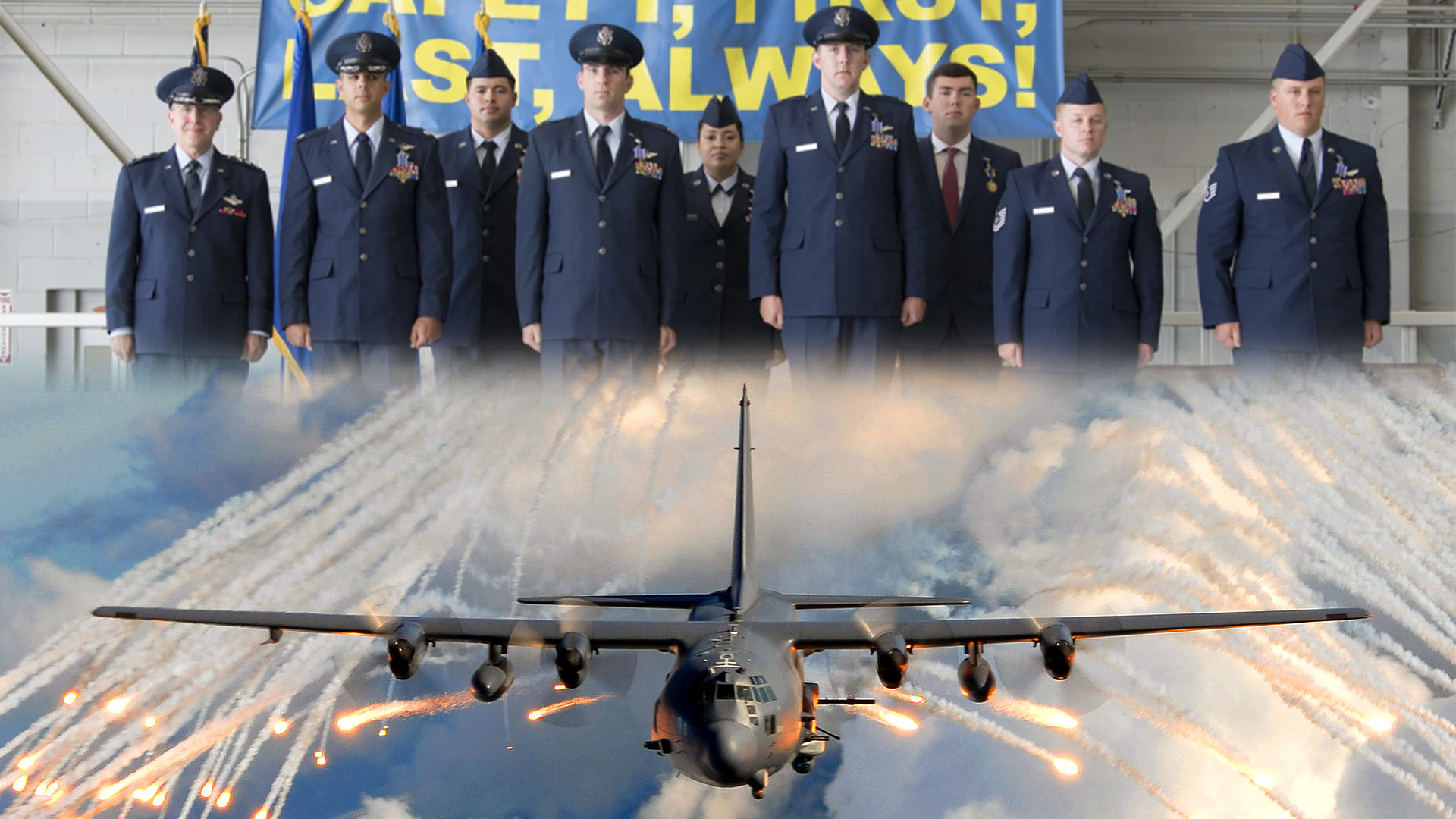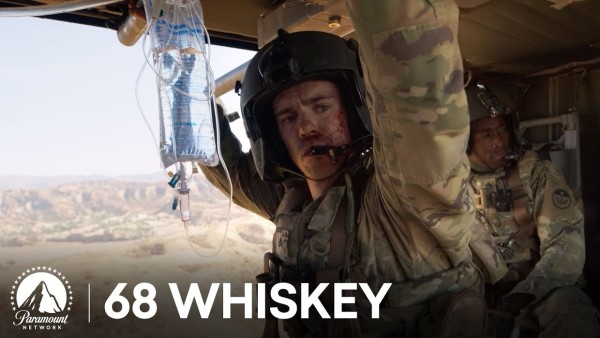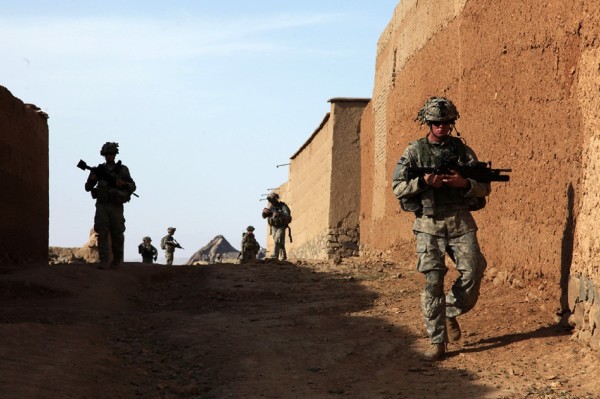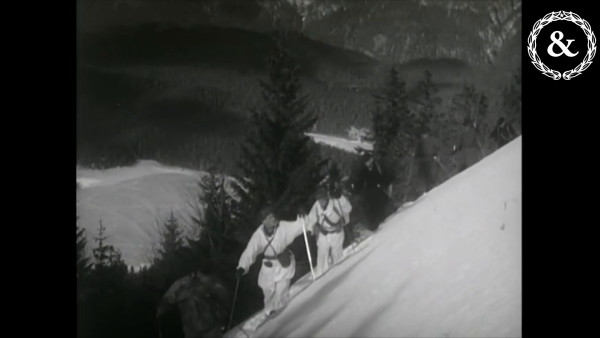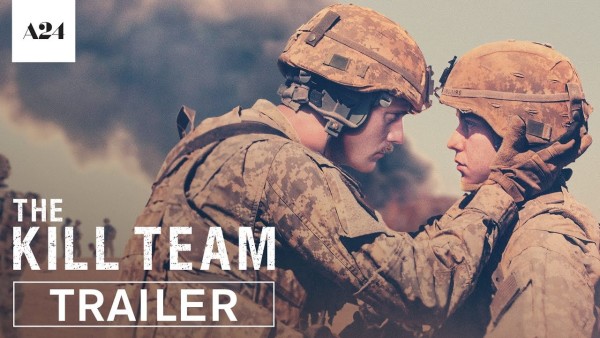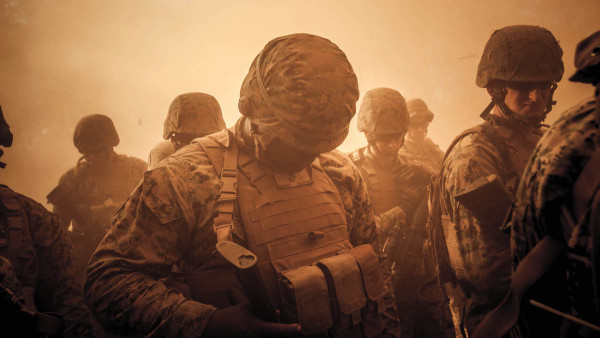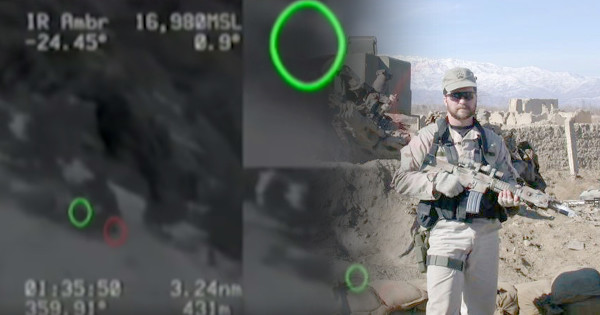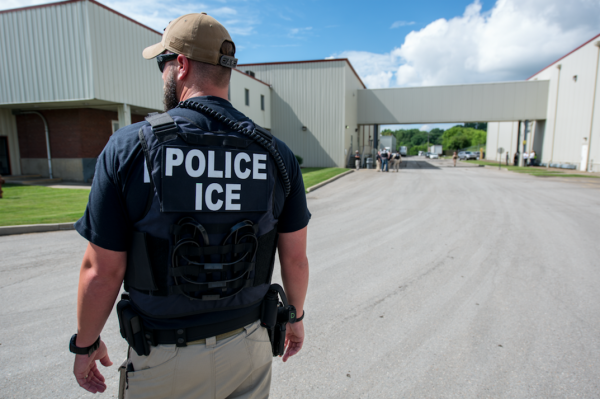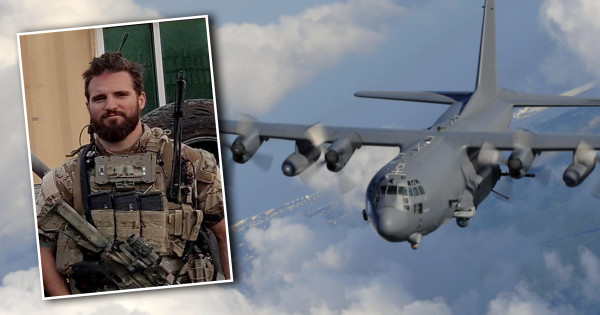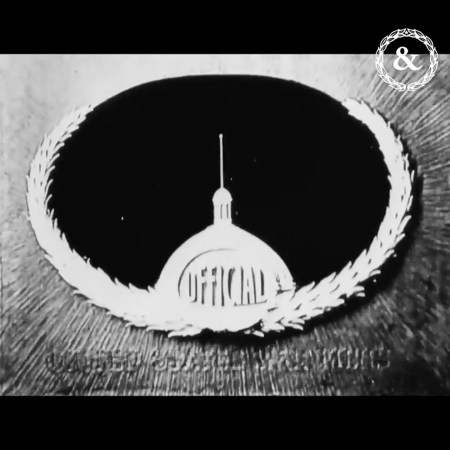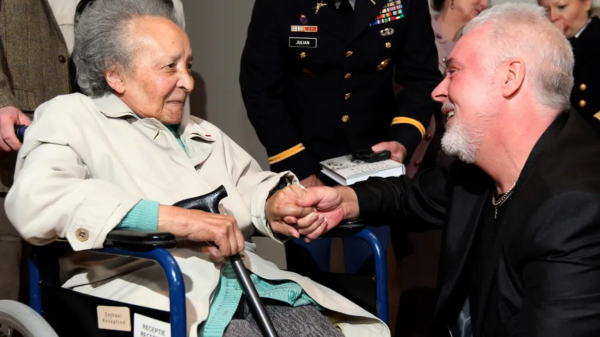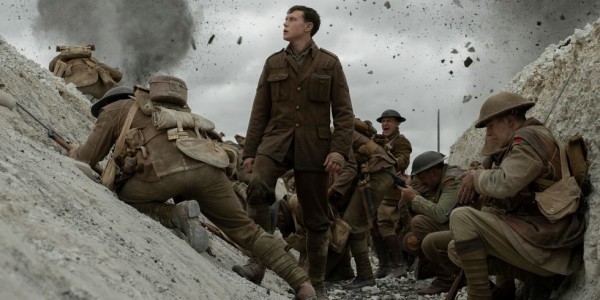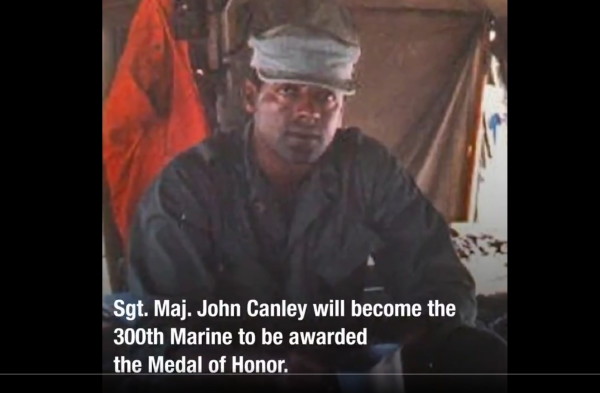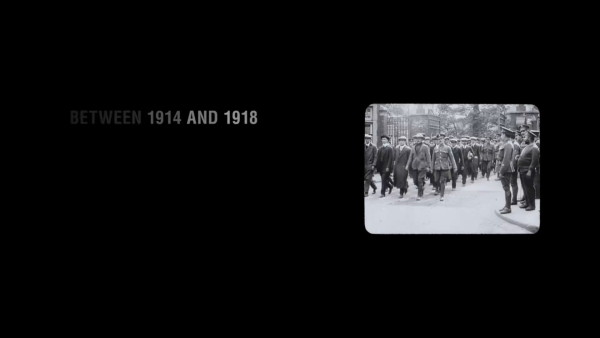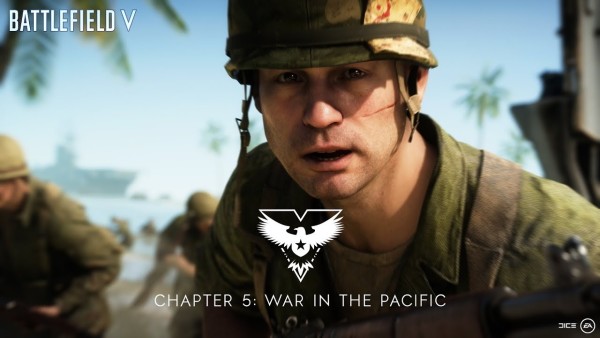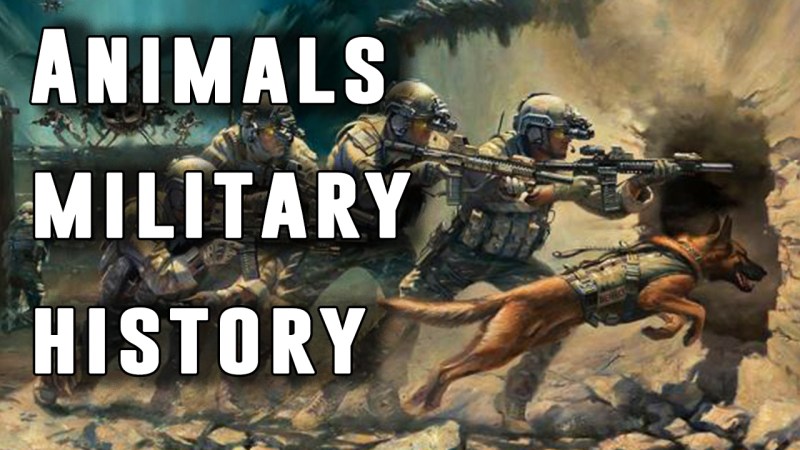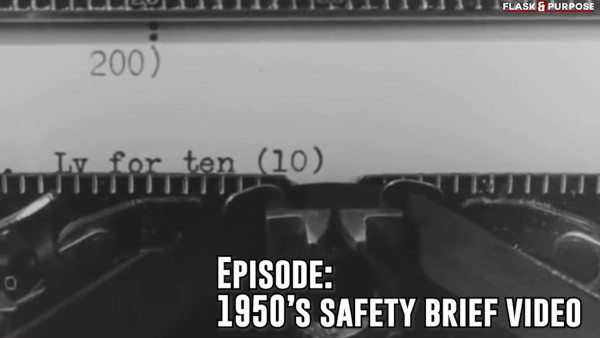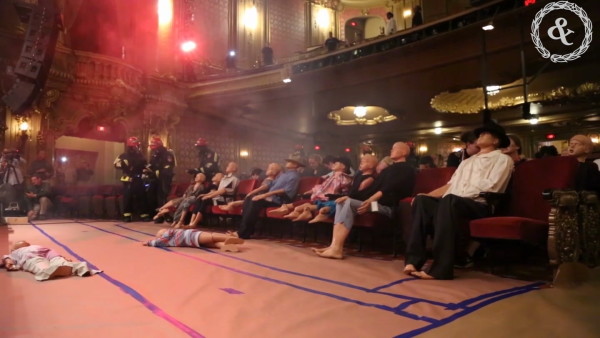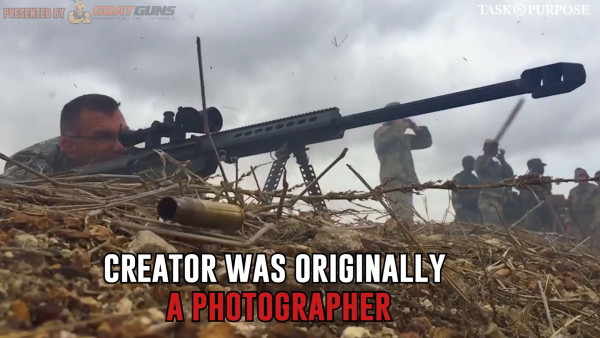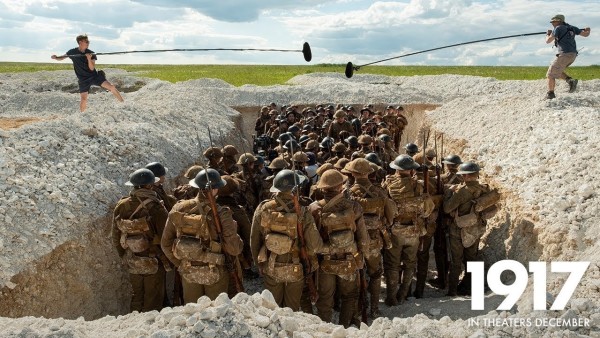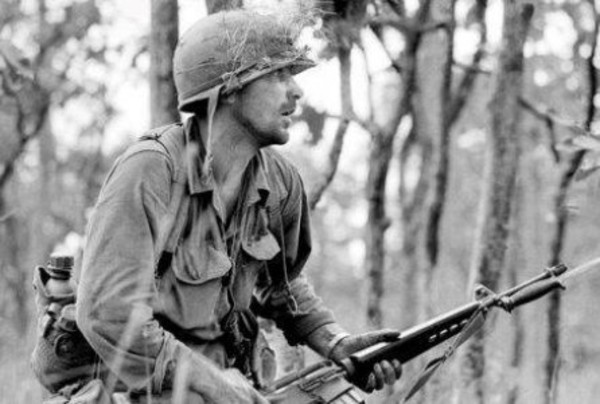An Air Force AC-130 gunship crew was recognized at Hurlburt Field, Florida on Tuesday for saving the lives of 88 American and Afghan Special Forces members during a fierce battle in Afghanistan in September 2019.
Five of the crew members aboard the AC-130J Ghostrider flight “Shadow 71” received the Distinguished Flying Cross, and four others received Air Medals, according to a press release from the 1st Special Operations Wing.
Shadow 71 provided almost two hours of close air support against several enemy ambushes, attacked three separate enemy positions and shielded helicopter assault forces while they evacuated casualties, according to the award citation.
The 1st Special Operations Wing declined to share more specifics of the operation, such as the objective of the mission, the number of enemy fighters involved and the number of casualties, citing operational security.
“I always say gunships are a team sport; you really can’t do something like this without a great team,” said Air Force Lt. Col. Christopher McCall, Shadow 71’s aircraft commander. The commander is also usually the pilot of the aircraft. “Shadow 71 has talent from front-to-back.”
McCall received the DFC alongside Capt. Jasen K. Hrisca, weapon systems officer; Capt. Tyler D. Larson, combat systems officer; Tech. Sgt. Jake M. Heathcott, lead special missions aviator; and Staff Sgt. Kyle W. Burden, sensor operator.
The recipients of the Air Medal were Maj. Brian D. Courchesne, co-pilot; and three special missions aviators: Staff Sgt. Alex Almarlaes, Senior Airman Brianna S. Striplin and Senior Airman Thomas I. Fay.
“To the entire crew of Shadow 71: Thank you for who you are; thank you for being our examples; thank you for your service to the nation; thank you for your dedication to our mission,” said Lt. Gen. James C. Slife, the head of Air Force Special Operations Command, during the award ceremony on Tuesday.

The eighth highest award for bravery, the DFC is awarded to any officer or enlisted person of the U.S. military for heroism or extraordinary achievement while participating in aerial flight. The Air Medal is the ninth-highest and is awarded to U.S. military and civilian personnel for single acts of heroism or meritorious achievements while participating in aerial flight.
Shadow 71 is the latest in a 54-year line of AC-130 aircrews who provided clutch air support for U.S. and allied troops under fire. Last spring, an AC-130U crew was awarded two Distinguished Flying Crosses and 12 Air Medals for phenomenal gunnery above a firefight against ISIS fighters in Afghanistan in April 2019.
“I would have to reach for examples like Normandy, Iwo Jima or Hamburger Hill to appropriately convey the degree to which the enemy were prepared and ready for our assault,” wrote one airman about the battle the AC-130U crew helped win that day.
The latest AC-130 model, the AC-130J Ghostrider, has a particularly intense reputation for death and destruction. Air Force officials have called it “the ultimate battle plane,” and a “bomb truck with guns on it.”

The aircraft comes equipped with a 105mm cannon, a 30mm GAU-23/A cannon and wing pylons designed to haul both GBU-39/B Small Diameter Bombs and AGM-114 Hellfire missiles.
The Ghostrider’s 30mm cannon in particular is “almost like a sniper rifle. … It’s that precise, it can pretty much hit first shot, first kill,” then-1st SOW commander Col. Tom Palenske told Millitary.com back in 2017, adding that the aircraft is “going to be the most lethal, with the most loiter time, probably the most requested weapons system from ground forces in the history of warfare.”
Palenske was right, and the Ghostrider was soon working overtime in Afghanistan. “Every night, the AC-130J is flying,” Col. Terence Taylor told Stars & Stripes in 2019. “The people they are supporting are requesting them every single night.”
The Ghostrider could get even deadlier with the addition of a directed energy weapon (that means a laser) that Air Force Special Operations Command said would be ready sometime in fiscal year 2022, which is coming up fast.
A 60 kw laser could “achieve high precision lethal effects on targets with little to no acoustic signature and very low collateral damage,” said then AFSOC chief Lt. Gen. Marshall ‘Brad’ Webb in 2018.
But as the crew of Shadow 71 proved, their training and conventional weapons suite are already doing more than enough to back up American ground troops when they need it.
You can read the full DFC citation below:
Lt Col Christopher B. McCall, Capt Jasen K. Hrisca, Capt Tyler D Larson, TSgt Jake M. Heathcott, and SSgt Kyle W. Burden who distinguished themselves by extraordinary achievement while participating in aerial flight as an AC-130J crew, in support of Operation FREEDOM’S SENTINEL, September 2019. During that mission, the AC-130J crew provided nearly two hours of continuous close air support fire against multiple enemy ambushes, saving the lives of 88 American and Afghan Special Forces members. In total the crew engaged three separate enemy positions, provided continuous fire shielding helicopter assault forces during landing and casualty evacuation, and ultimately ensured the rescue of wounded ground forces. The professional competence, aerial skill, and devotion to duty displayed by the AC-130J crew reflect great credit upon themselves and the United States Air Force.

